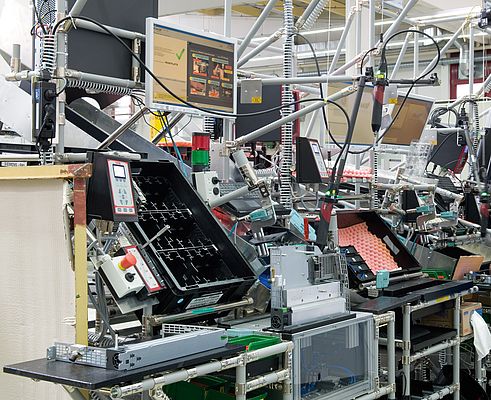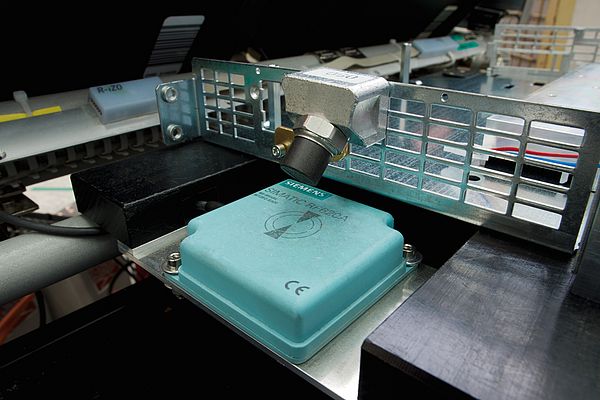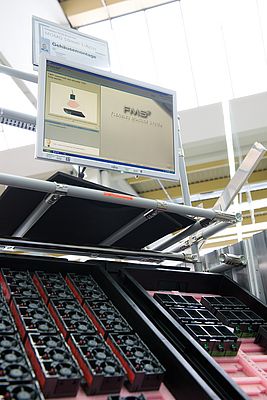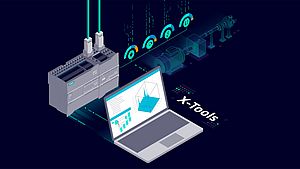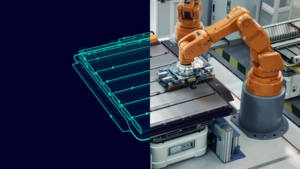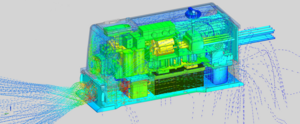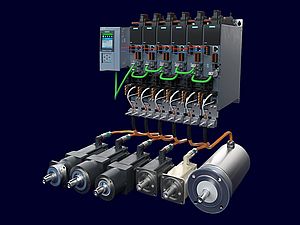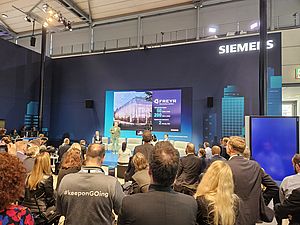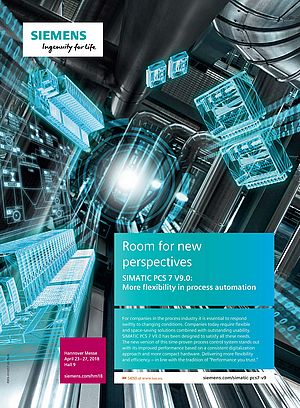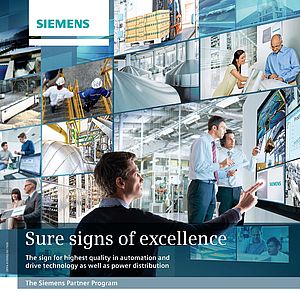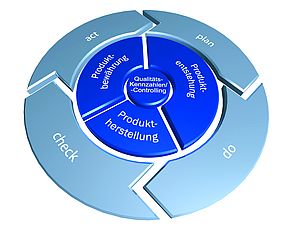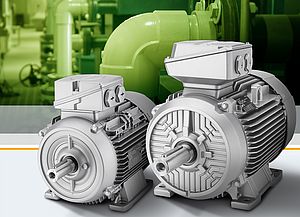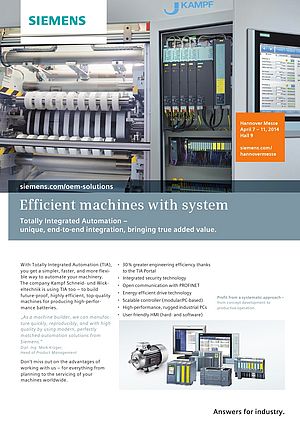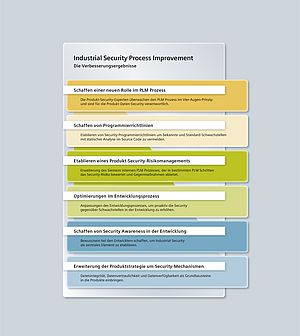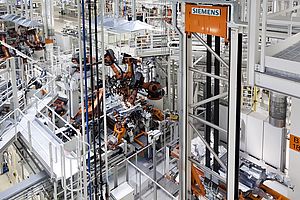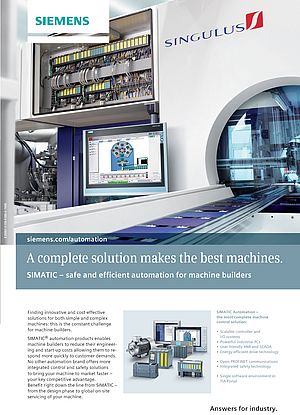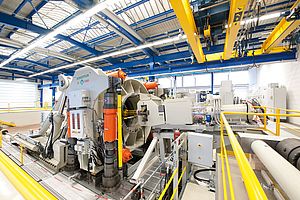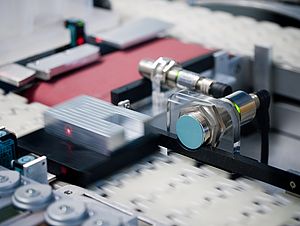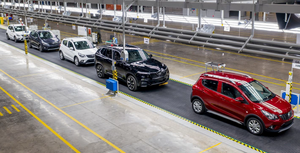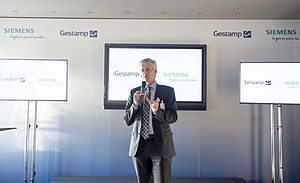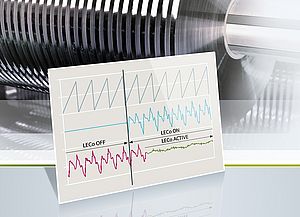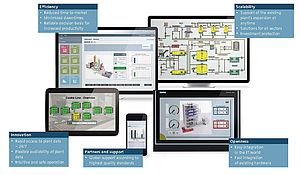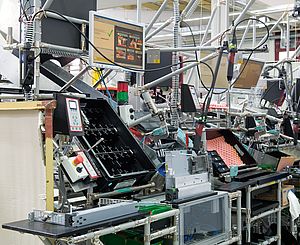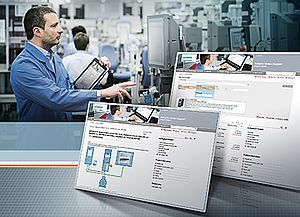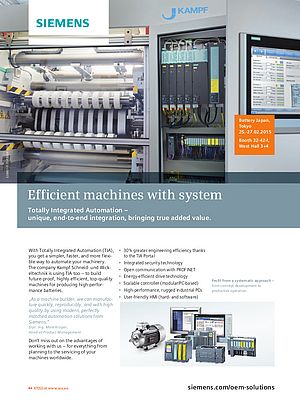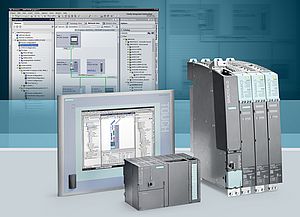Siemens Electronics Manufacturing Plant in Erlangen (GWE in short) - recipient of the "Factory of the Year" award - continues to take innovative approaches. The managers responsible for the manual assembly of single- and two-axis motor modules of the modular drive system SINAMICS S120 have unlocked further potential for optimization. A major contributor in doing so is the latest RFID (radio frequency identification) technology: the SIMATIC RF600 - the high-performance UHF (ultra-high frequency) system by Siemens. With it, the repeated manual scanning of the device ID and almost all interactions with operator panels by the production staff could be eliminated. Thanks to the automatic capture and monitoring of the work progress, the process reliability is increased - thus assuring the quality.
Automation Approach for Assembly Islands to be newly set up
In the GWE, the assembly of information and power electronics for the product families SINUMERIK, SIMOTION and SINAMICS is organized into lean islands with multiple assembly stations. By adjusting the number of employees working at the island to the capacity needed, it is possible to flexibly respond to fluctuating user demands. These workstation systems required new means of communication between the employees and the production equipment, since the previously used method of manually scanning the data matrix codes would have increased the effort to identify the devices many times over. A way had to be found to reduce the number of scans to a minimum. At the same time, the production equipment was to automatically switch to the variant being produced. An operation by the production staff was to be no longer necessary.
A four-person planning team from the GWE came up with the idea to tackle this challenge with a multi-station-capable SAP-based system that features customizable Web interfaces and enables the control of production equipment as well as the automated, contactless identification of the devices via RFID. Thanks to the outstanding teamwork between production engineering, production and IT, the temporary support by RFID specialists from the Siemens head office in Nuremberg, and the early involvement of the production staff in the implementation and optimization of the workstations, a high-performance overall system could be developed and deployed for the series production.
Be reliable in a difficult Environment
On the one hand, the project team was challenged by difficult environmental conditions. On the other, the identification system for this new application had to be fast and networkable. The metallic surroundings - with changing reflections and thus interference caused by the different equipment and orientation of the drive modules - required extensive RFID reader parameterization options; preferably centralized for all system components over the site network. Furthermore, the read and write ranges had to be sufficiently long to give the employees adequate flexibility during the product handling. The UHF system SIMATIC RF600 was perfect for this - it can read and write data from distances as short as a few centimeters up to several meters. The powerful read/write devices RF670R with up to four antenna connections, rugged antennas RF620A and compact screw tags (data transponders) RF630T were determined to be the most suitable system components. The latter also was chosen over plastic transponders to rule out damage to the electronic components resulting from undesired electrostatic discharge (ESD).
With the new IT system in the lean islands, the networkable RFID readers could be directly connected to the Ethernet without additional PLC hardware. As a result, an automated, mistake-proof transfer of the devices between the assembly stations as well as a controllable sequence of wildly differing operation steps can be achieved with little effort.
Great Efficiency - Step by Step
The work contents of the newly created lean islands - one for single-axis and one for two-axis motor modules with a width of 50 mm as well as one for 100 mm modules - are each divided among five assembly stations so that the activities of the employees are line-balanced. At the first station, the IT system controls a so-called pick-to-light installation, which uses illuminated fields to show the employee the part that is to be picked up and fitted. At the subsequent stations, it coordinates multiple screwdriving controllers and stationary code readers SIMATIC MV420 ((image 4)) - likewise connected over Ethernet - for the identification/checking of the components to be installed in the devices.
The RFID transponders are mounted on magnetic holders, which are custom-made for the application. They are hung to the products prior to feeding and remain there until the end of the assembly process. The ERP-based IT system receives the assembly order and prompts the employee to insert a device into the first assembly station. There, a unique FID/item number is written to the transponder. Thereafter, the system automatically displays the associated process plan, detailed and illustrated work instructions as well as status information. All assembly steps are given or autonomously executed by the system - loading of screwdriving programs, activation of scanner, transfer of pick-to-light configuration, etc. - and then acknowledged. Inefficient manual actions - such as the scanning of labels or the selection of menu items via mouse, keyboard or softkeys on a touchscreen display - can thus be eliminated. Once the steps of an assembly station have been performed, the module can be removed and handed to the next station. There, the transponder is contactlessly read and the new process plan immediately displayed. Manual and automatic work steps take place chronologically according to this plan so that there is no chance of accidentally omitting a step, which would result in the assembly of a faulty module. The transfer of the product to the next workstation, including checking in and out at the system, proceeds without waiting times for the employee - thus ensuring a swift workflow.
At the line end, a type label containing a matrix code is printed and affixed. The completed motor modules can then be supplied to the electronic functional test. The transponders are now taken off and brought to the beginning of the line, where they are ready for the next products.
Convenient, Centralized Parameterization and Diagnostics
The managers responsible emphasize that the commissioning and fine adjustment of all RFID components can be performed with ease from a central location over the site network. There is no need for an inconvenient and time-consuming programming of each individual component on-site.
Another advantage: The RFID devices as well as the PCs and screwdriving controllers can be preconfigured ready-to-use. A possible exchange consequently does not necessitate specialized staff, which is a great convenience especially during night shifts.



